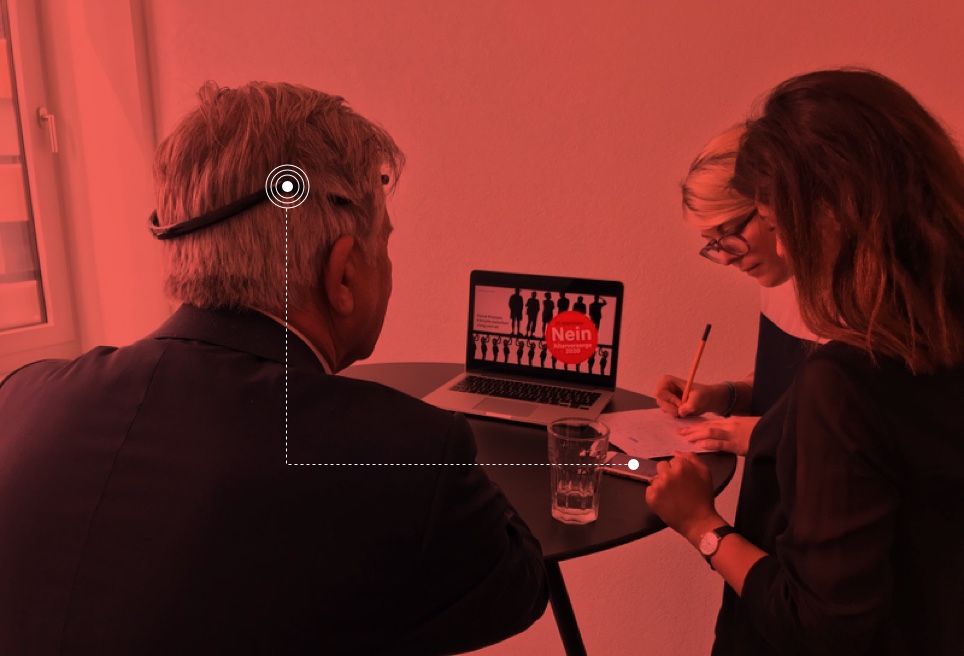
How big data can help you find the right message
Enigma researchers found various ways to analyze the feelings behind online content and data.
Ambition
Knowing people’s ideas on different subjects is exciting, but decision making is much more exciting than that.
Being able to understand what our society thinks through online news and blogs is a key advantage for politicians. Fortunately for political parties in Switzerland and abroad, Enigma loves to explore huge datasets extracted from web pages.


Action
- 3-week timespan
- 4 designers
- 1 photographer
- 3 researchers
- 2 campaign managers
- Interviews
- Using the latest technology in data marketing, emotional analysis and natural language understanding
Yes! This is all it takes to explore the emotions behind data found on web pages. In the preparatory phase of a new campaign for a political party we usually start with insights on how the general public feels about a specific topic.
Extract data
Using home-grown scripts, we started by gathering over 1500 news and blog articles written both by Swiss citizens and opinion leaders.
Sentiment analysis
After having gathered and extracted the data, the Enigma team was able to perform a sentiment analysis of the content. Through this analysis, the team was able to detect the emotional state of the public about the next topic of voting. We can translate this emotional analysis into voters’ intentions about a specific political topic.
The sentiment analysis also provided rich insights for the design team, who could re-use specific hot topics where the public had stronger emotional reactions in order to design emotionally strong posters.


Design
In a design sprint, Enigma’s designers developed over 100 ideas for the political campaign. Based on the sentiment analysis and the gathered content, the design team developed different creative concepts.
The team managed to generate lots of variations and use every corner of the theme, so the political opinion could be shown in many different and interesting ways.
These 100 creative directions were then discussed, improved, and finally eight favorites were selected to be tested by voters

Qualitative research: Voters feedback
The interviews were focused on voters from two different target groups (seniors and young voters). These interviews allowed the team to verify the reaction of voters on the selected creative concepts that took the form of posters. This qualitative research helped the design team to not only see which posters perform better, but also discover the understanding that voters had of the different creative directions.

Biometrics: Electroencephalogram (ECG)
Following the interviews, the research team went deeper into the understanding of the emotional reaction of voters through the use of ECG technology. This technology measures brain activity and lets researchers see the “unconscious” emotional reaction of the viewer on six levels: stress, engagement, interest, excitement, focus, and relaxation.


Quantitative research: A/B testing
To complement the qualitative research, the researchers used a quantitative approach. Through A/B testing, the researchers were able to highlight which poster performed better. This quantitative approach made it possible to show which creative concept was more adapted to a specific culture and region of Switzerland.
Impact
Through this complete mix of design and research, we were able to have the following impact:
- Using the latest technology in marketing (data gathering, interviews, biometrics analysis, A/B testing) we were able to estimate voters’ emotions around a political topic.
- Inform the design process through data to create effective graphic design that influences the voters.
- Select the best performing political poster that fits to a specific region and culture.
Credits
STRATEGY: Martin Künzi
CAMPAIGN MANAGEMENT: Patrizia Lamprecht, Nicolas Gabl
RESEARCH: Romain Pittet, Daniele Catalanotto, Ebrahim Mehrno
DESIGN: Nicole Christen, Yoann Vuagnoux, Loris Olivier








